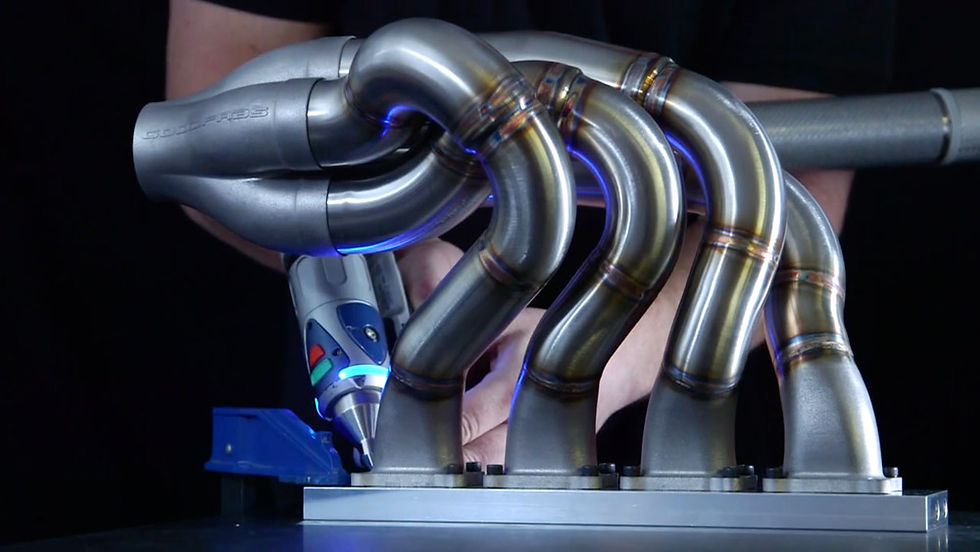Exhaust Dynamics in Racing Engines: Unleashing Power and Performance
- delilledidier
- Aug 4, 2023
- 2 min read

The exhaust system plays a pivotal role in optimizing engine performance, power delivery, and overall efficiency on the track. In this exploration, we'll dissect the general exhaust dynamics, touching upon key principles and providing real-world examples.
1. Flow Dynamics and Backpressure:
In a racing engine, exhaust gases are the byproduct of the combustion process. Efficient expulsion of these gases is crucial to ensure optimal engine performance. The exhaust manifold, often designed as tuned headers, collects the exhaust gases from each cylinder and channels them into a single outlet. The primary goal is to minimize backpressure while maintaining proper scavenging, a process that involves using the momentum of the exhaust gases to create a low-pressure area in the cylinders during valve overlap.
NASCAR engines often employ long-tube headers with carefully calculated lengths to ensure effective scavenging and minimal backpressure. This design aids in enhancing horsepower and torque across the engine's power band.
2. Tuned Lengths and Resonance:
Tuned lengths play a critical role in optimizing exhaust gas flow and enhancing engine performance. The length of the exhaust pipes impacts the timing of reflected pressure waves, influencing the scavenging effect. These pressure waves can create a resonance effect, where exhaust pulses help draw out the remaining exhaust gases from the cylinders, promoting a cleaner burn in the next combustion cycle.
Formula 1 engines, known for their exceptional power output, utilize intricately designed exhaust systems with precise pipe lengths. This maximizes exhaust gas velocity and promotes optimal resonance to extract every ounce of performance from the engine.
3. Materials and Heat Management:
Racing engines operate under extreme conditions, generating immense heat. The choice of materials for the exhaust system is crucial to ensure longevity and sustained performance. High-quality materials such as titanium, Inconel, and stainless steel are often employed to withstand the intense heat and corrosive gases.
In endurance racing, where engines endure prolonged stress, the use of heat-resistant alloys like Inconel in the exhaust system is crucial. These materials prevent premature degradation and maintain consistent performance over long races.
4. Acoustic Engineering and Sound Tuning:
The exhaust note of a racing engine is not just a pleasing auditory experience; it also provides insights into the engine's performance. Acoustic engineering plays a role in shaping the exhaust note while adhering to sound regulations on various racing circuits. The exhaust system can be tuned to emphasize specific frequencies, enhancing the engine's perceived power.
Sports car manufacturers like Porsche meticulously engineer their exhaust systems to create an iconic and recognizable engine sound. The Porsche 911's flat-six engine, with its distinct exhaust note, is a prime example of how sound tuning can be integrated into high-performance vehicles.
In conclusion, exhaust dynamics in racing engines are a complex interplay of flow optimization, pressure wave manipulation, material science, and acoustics. Every component of the exhaust system, from headers to tailpipes, is carefully designed and engineered to extract maximum performance from the engine while adhering to regulatory constraints. The examples highlighted in NASCAR, Formula 1, and endurance racing underscore the critical role exhaust dynamics play in pushing the boundaries of power and efficiency on the race track. As an expert in the field, Goodfabs Performance Engineering can assist you with all your exhaust enquiries.









Comments